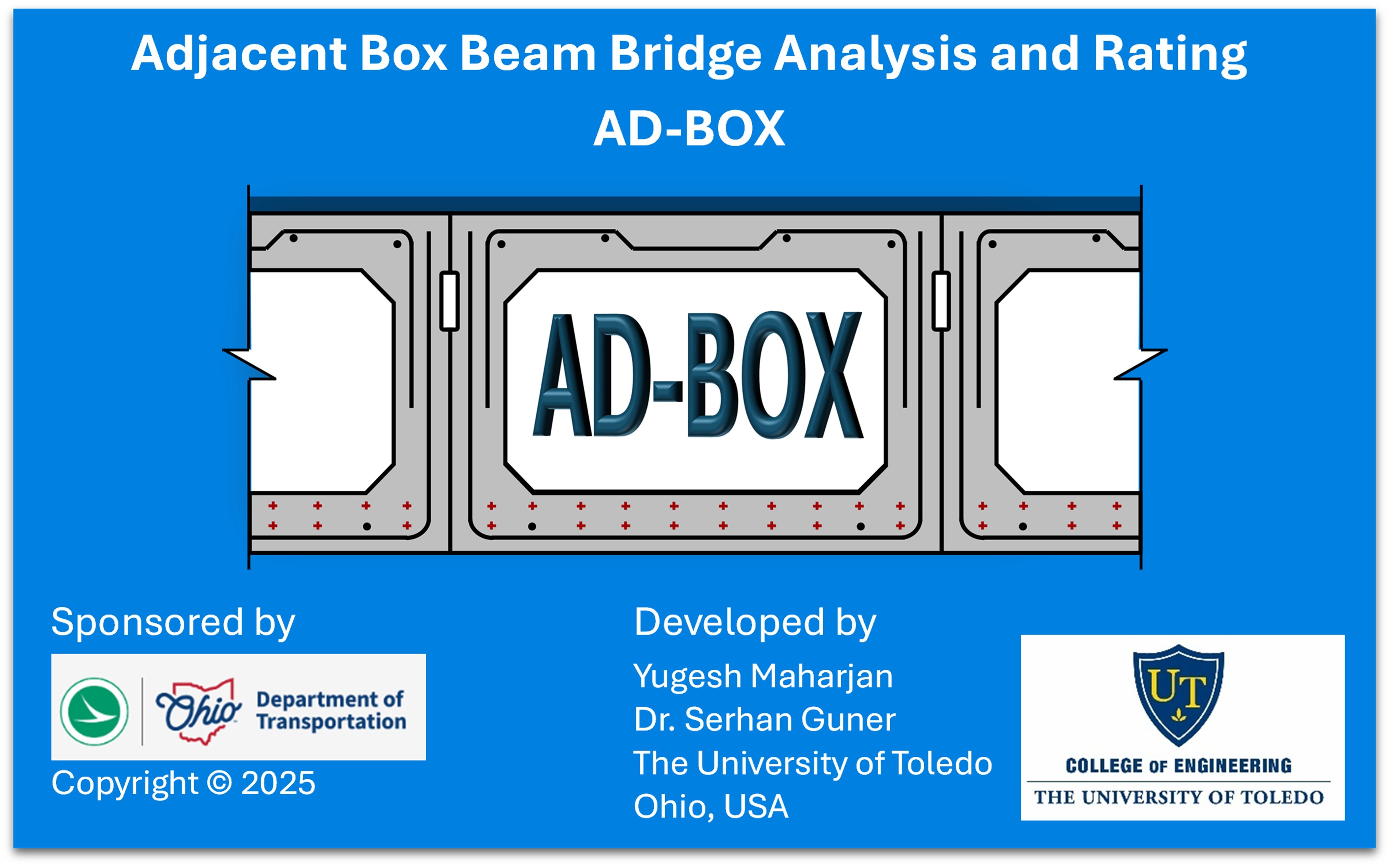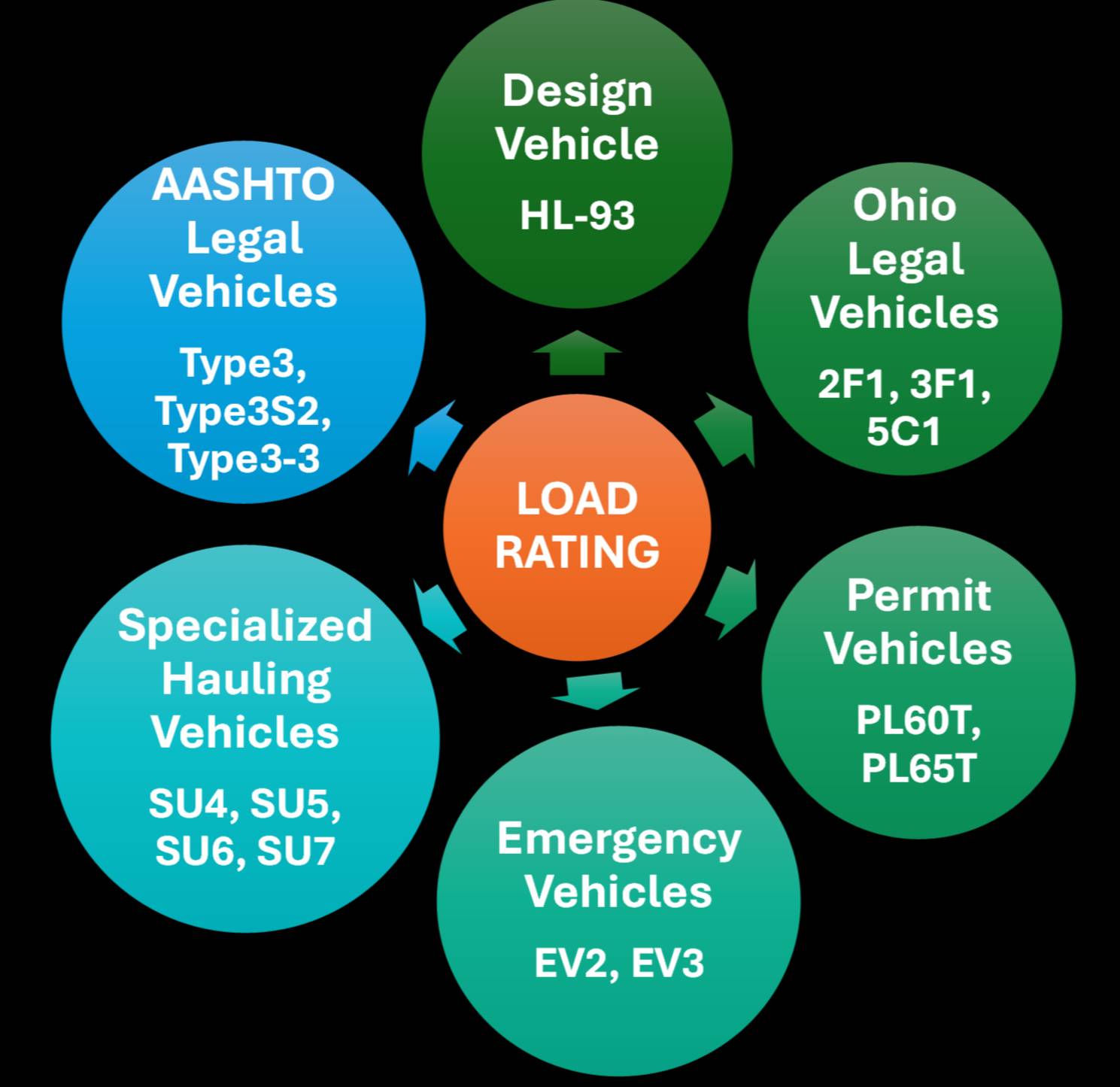Understanding Adjacent Box Beam Bridges and Their Evaluation
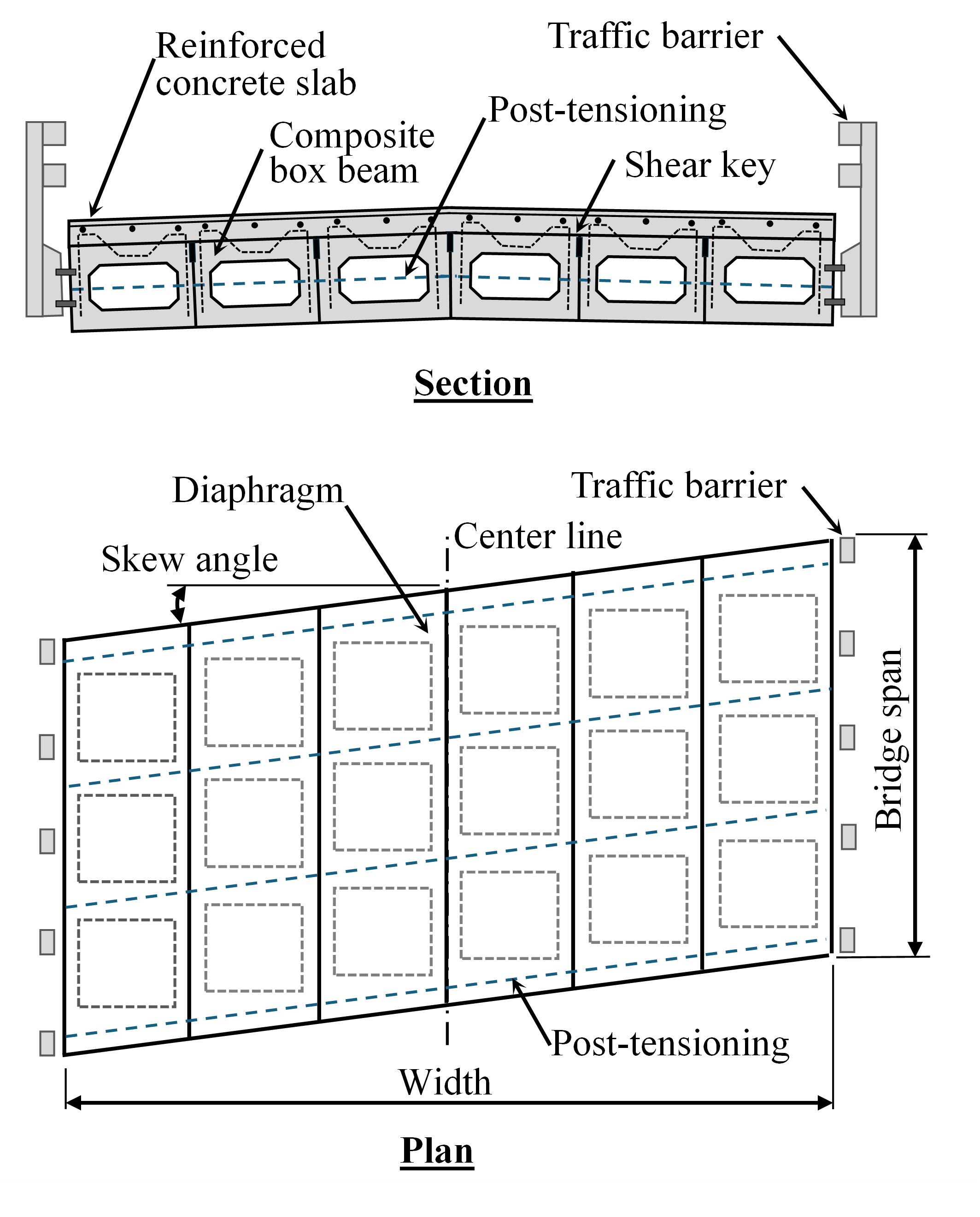
Precast, prestressed adjacent box beam bridges are a common and efficient bridge type. They're built by placing precast concrete
box beams side-by-side, then connecting them with shear keys and post-tensioning.
You can see this in the figure below. These bridges are typically simply supported,
and can be straight or skewed, with either composite or non-composite beams. They
make up a significant portion of the U.S. bridge inventory, for example, accounting
for 27% of Ohio's bridges. Primarily used for short to medium spans, box beam bridges
are favored for their excellent span-to-depth ratio, quick construction, and pleasing
appearance.
The Importance and Challenges of Bridge Load Rating
Bridge evaluation is a systematic process to assess a bridge's structural condition, load capacity,
and overall performance, ensuring it remains safe and serviceable under current and
future loads. A critical part of this is load rating, which determines a bridge's safe live load-carrying capacity based on its design
and site conditions. In fact, National Bridge Inspection Standards require all bridges
in the national inventory to be load rated.
However, load rating bridges, especially box beam types, presents several challenges.
Engineers must perform extensive calculations for various vehicle types, adhering
to multiple standards. Relying on hand calculations or general-purpose tools is often
complex and time-consuming due to the sheer number of box beam sections used historically
and the intricate calculations required for shear, flexure, and stress limits. Despite
the widespread use of adjacent box beam bridges, there's a notable gap in available
computational methods and automated tools for their specific load rating, compared
to other bridge types.
Introducing AD-BOX: A Solution for Efficient Load Rating
To overcome these challenges, we developed AD-BOX, an innovative computer tool designed for the accurate, reliable, and rapid load rating of adjacent box beam bridges. AD-BOX automates the entire process: it calculates loads, distribution factors,
bending moments, shear forces, and beam capacities based on your input, ultimately
generating the essential rating factors.
|
|
AD-BOX is specifically designed for the load rating of precast, prestressed adjacent box
beam bridges. It meticulously evaluates these structures using applicable limit states
under both inventory and operating conditions. For strength limit states, it employs
the load and resistance factor rating (LRFR) method, while for service limit states, it utilizes the allowable stress design (ASD) method.
AD-BOX offers comprehensive analysis capabilities, including:
-
Accounting for both skewed and non-skewed spans, with composite and non-composite
cross-sections.
-
Detailed analysis of flexure and shear.
-
Consideration of both single and multicell box beam sections.
-
Assessment of stresses at all potentially critical locations for strength and service
limit states.
-
Accurate capacity calculations.
-
Generation of final load rating factors.
Enhanced Accuracy and Efficiency
A key feature of AD-BOX is its ability to precisely determine the critical location exhibiting the maximum load effect and the minimum rating factor. Unlike conventional
methods that might use a simplified one-tenth-of-the-span approach, AD-BOX calculates
the maximum moment capacity at the exact location of the maximum moment. This significantly improves accuracy, streamlines analysis output, and reduces engineering
effort.
Furthermore, AD-BOX employs a specialized algorithm to tackle the challenge of determining
the exact maximum moment location for longer vehicles, especially when some axles
extend beyond the bridge span. This ensures only relevant axles within the span are
considered in calculations. The figure below illustrates how AD-BOX accurately identifies
the exact maximum moment location for different vehicle types on a simply supported
bridge.
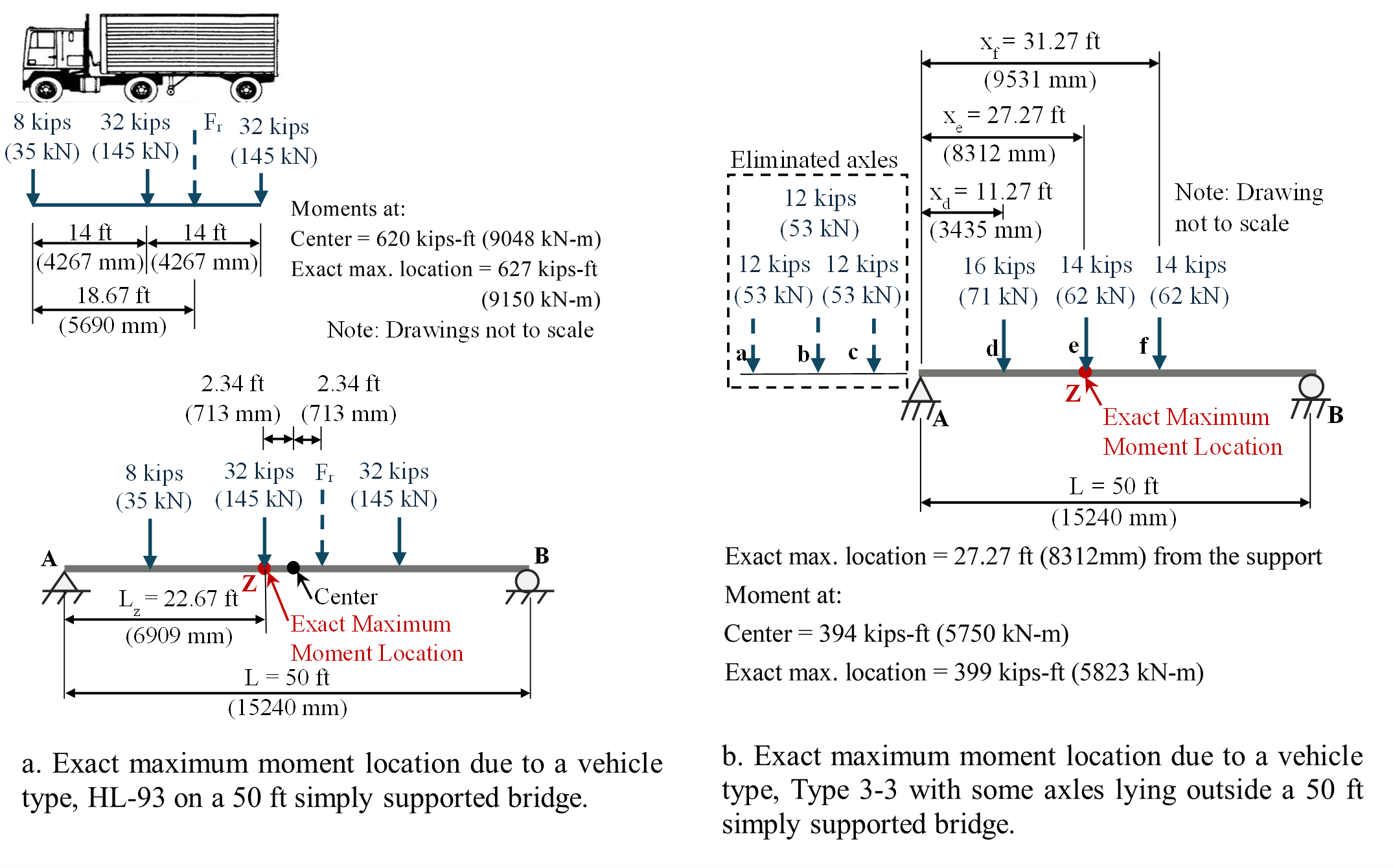
Comprehensive Shear Load Rating
AD-BOX evaluates shear load rating not just at typical shear-critical locations, but
also at other potentially critical points along the bridge. This is especially important where shear reinforcement details
or spacing might change. As illustrated in the figure below, the shear load rating
can often be more critical in "Region 2" (where shear reinforcement changes) than
at the conventionally assumed shear-critical section.
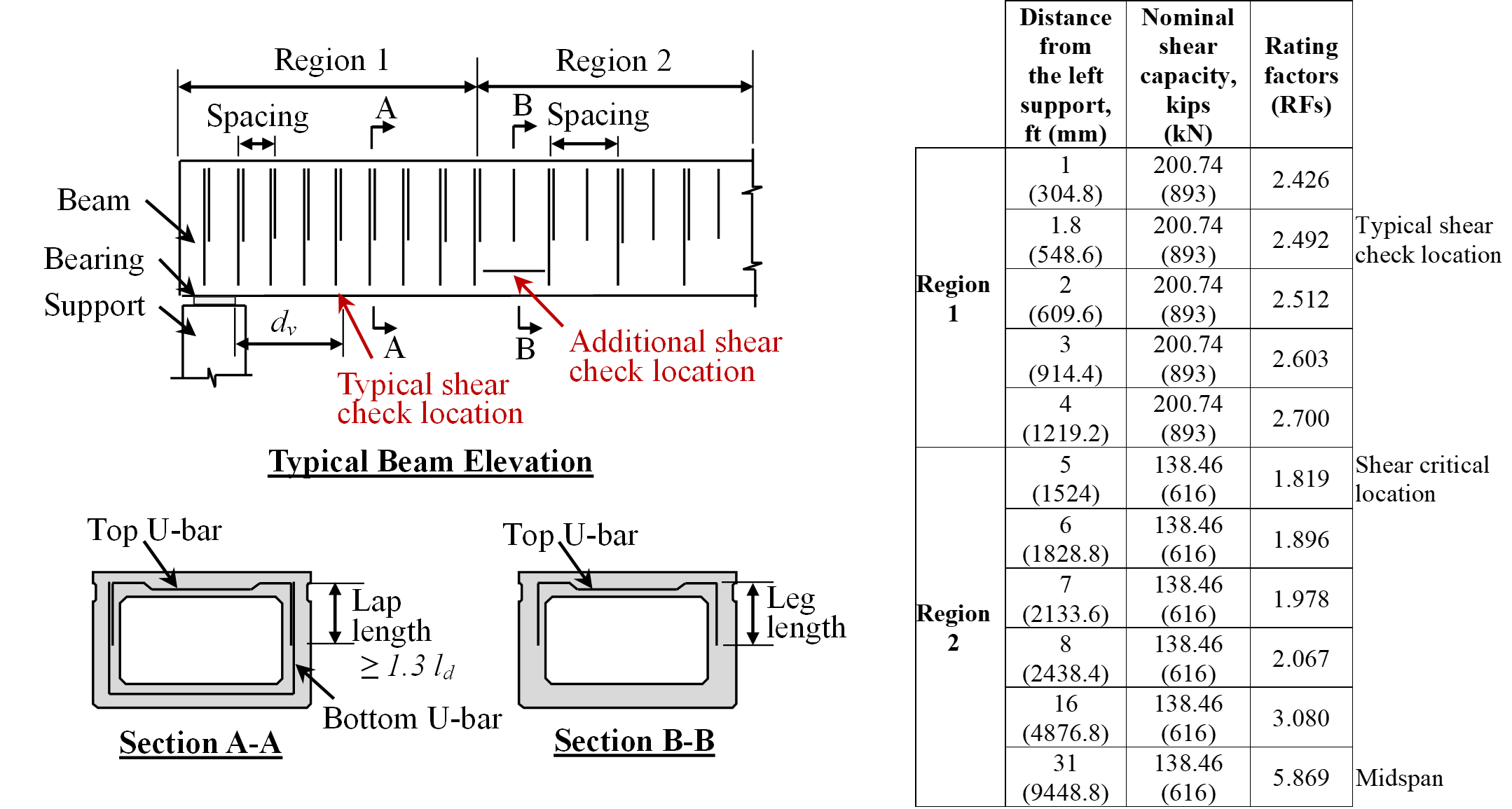
Versatile Moment and Shear Envelopes
To maximize the tool's utility for engineers working with any simply supported bridge,
AD-BOX includes an algorithm that generates moment and shear envelopes for all 15 standard vehicle types, as well as for extra-long custom vehicles. These
envelopes are provided in both tabular and chart formats. The tabular format allows engineers to easily copy values for use in other analysis
software or for independent hand calculations. The chart format, on the other hand,
offers a clear visual representation of the envelopes, highlighting their variation
along the span and precisely identifying peak values.

|
AD-BOX: Verified Accuracy and Reliability
The figure below showcases the rigorous verification and comparison studies conducted
on AD-BOX. We evaluated 18 bridges using 15 standard vehicle types and four custom vehicles (12, 15, 19, and 35 axles) to confirm the tool's performance.
Our verification studies, comparing AD-BOX results against independent hand calculations for the 15 standard vehicle types,
consistently yielded a mean rating factor (RF) ratio of nearly 1.0, with a coefficient
of variation (CV) close to 0%. This definitively confirms the accuracy of AD-BOX.
Furthermore, comparison studies putting AD-BOX against general-purpose load rating software for all 15 standard and four custom
vehicle types (results are provided by Ohio DOT) consistently showed a mean RF ratio
of approximately 1.0, with a CV up to 3.72%. These results strongly affirm the reliability
of our proposed methodology.
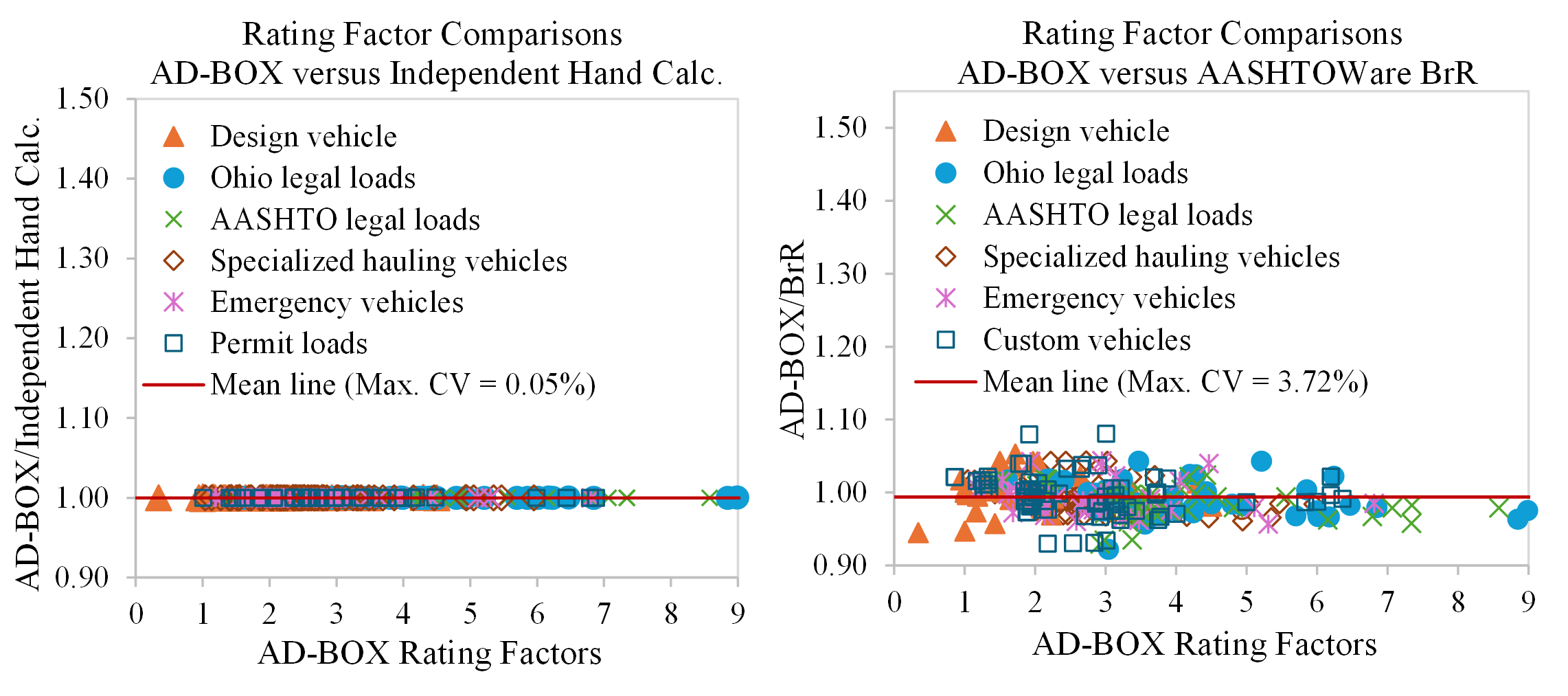
|
